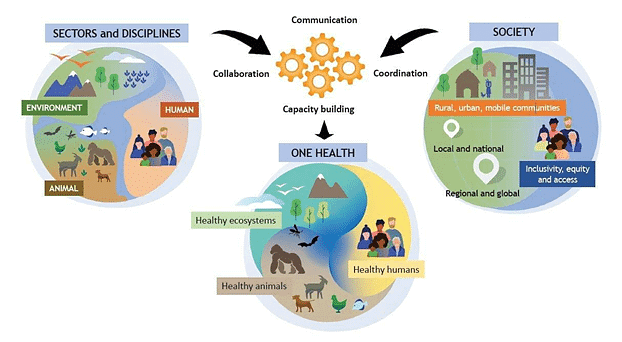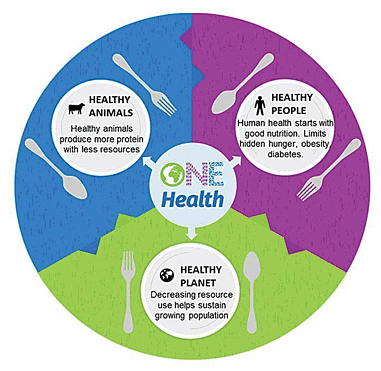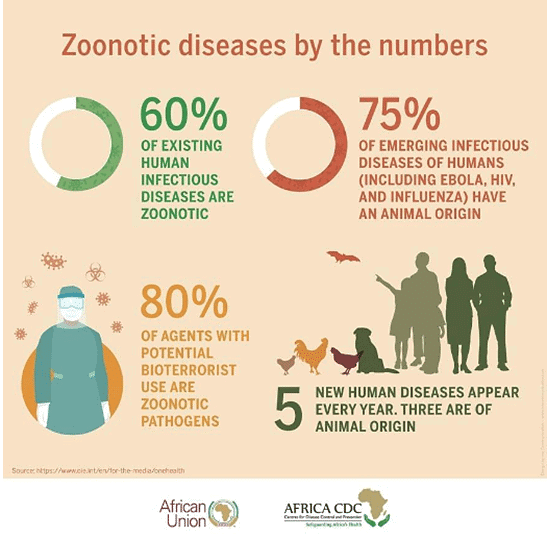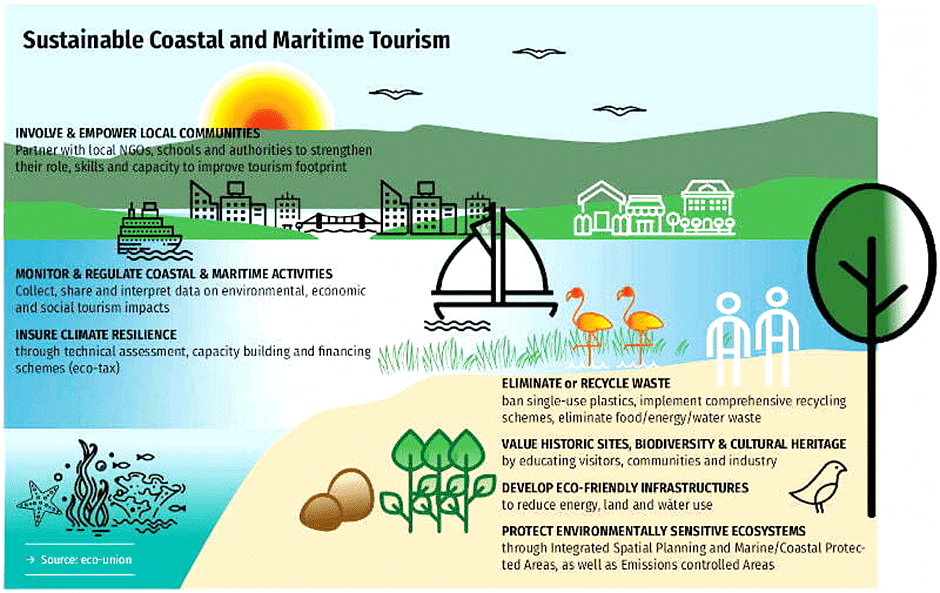Environment & Ecology: September 2022 Current Affairs | Current Affairs & Hindu Analysis: Daily, Weekly & Monthly - UPSC PDF Download
| Table of contents |

|
| New Tiger Reserve in Uttar Pradesh |

|
| World Environmental Health Day |

|
| India at Global Clean Energy Action Forum |

|
| Green Fins Hub |

|
| Global Registry of Fossil Fuels |

|
New Tiger Reserve in Uttar Pradesh
Why in News?
Recently, Uttar Pradesh (UP) approved the notification of the state’s fourth tiger reserve in the Ranipur Wildlife Sanctuary (RWS) in Chitrakoot district.
- This will be the 54th Tiger Reserve in India. Guru Ghasidas National Park of Chhattisgarh is the 53rd Tiger Reserve in India.
- A Ranipur Tiger Conservation Foundation will also be established for the protection and conservation of tigers in the region.

What are the Key Highlights about Ranipur Wildlife Sanctuary (RWS)?
- About
- RWS founded in 1977, has no resident tiger. However, it is an important corridor for the movement of tigers, according to the Status of tigers, co-predators and prey in India report by the National Tiger Conservation Authority (NTCA).
- The Ranipur Tiger Reserve will be the fourth in UP.
- It will also be the first in the Bundelkhand region of the state.
- Flora
- There is dry deciduous forest of Bamboo, Palash, Khair, Mahua, Dhau, Saal, Tendu, etc.
- Fauna
- Blackduck, Chinkara, Sambar, Cheetal, Bear, Leopard, Wolf, Wild dog, Blue bull, etc.
- Other Tiger Reserves in UP
- Dudhwa National Park
- Pilibhit Tiger Reserve
- Amangarh Tiger Reserve
World Environmental Health Day
In News
- Recently, World Environment Health Day was celebrated on September 26 which called for an urgent need to strengthen the One Health approach.
About World Environmental Health Day
- The theme for this World Environment Health Day is: Strengthening Environmental Health Systems for the implementation of the Sustainable Development Goals.
- There are 17 Sustainable Development Goals (SDGs) set by the United Nations to be achieved by 2030.
Challenges posed by Pandemic
- Climate change could facilitate the cross-species transmission of some 4,000 viruses by 2070, a 2022 study published in Nature journal found.
What is One Health approach?

- WHO defines it as: an integrated, unifying approach to balance and optimise the health of people, animals and the environment.
- The aim is to have a multi-sectoral approach to achieve long-term, effective solutions to issues surrounding food and water safety, nutrition, controlling zoonoses, pollution management, and combating antimicrobial resistance.
- It is important in preventing, predicting, detecting, and responding to global health threats such as the COVID-19 pandemic.
- One Health Quadripartite: The Food and Agriculture Organisation of the United Nations (FAO), the United Nations Environment Programme (UNEP) and the World Organisation for Animal Health (WOAH) work together with WHO to form the One Health Quadripartite.
Benefits of One Health

- Reduce potential threats at the human-animal-environment interface to control diseases that spread between animals and humans
- Tackle antimicrobial resistance (AMR)
- Ensure food safety
- Prevent environment-related health threats to humans and animals
- Protect biodiversity.
Issues associated with One Health
- The concept is in a very nascent stage (not yet completely developed) in India with sporadic efforts in some states.
- Wildlife surveillance has been the biggest lacunae according to Ashoka Trust for Research in Ecology and the Environment (ATREE).
- Institutes for high-security animal disease, virology and epidemiology exist but only in silos which runs counter to the concept of One Health.
- A weak biosafety process also hinders India’s One Health programme, barring a largely reactive approach.
- The Indian Council of Medical Research and the Department of Biotechnology are the agencies responsible for the biosafety process but it needs to be more standardised as it remains highly sectoral.
- Bats, primates and rodents have the highest potential to harbour pathogens that can infect humans. Those who handle these don’t always follow the necessary biosafety protocols.
- There is also a severe shortage of biosafety labs in India with only one biosafety level (BSL) 4 lab, the highest level of biosecurity, generally used for extremely infectious viruses like Ebola at the National Institute of Virology in Pune.
- Investment on this front is critical in preventing pandemics, particularly so in biodiversity-rich parts of India such as the Himalayas, the north-east region, Western Ghats and central India.
- The National Standing Committee on Zoonoses lacked representation from the wildlife sector and had unclear guidelines and the National Influenza Pandemic committee was disease-specific and only for the duration of the pandemic.

India’s approach towards One Health
- The first One Health consortium was launched in 2021
- It was led by the National Institute of Animal Biotechnology, Hyderabad, constituting 27 organisations.
- Pradhan Mantri Atma Nirbhar Swasth Bharat Yojna
- Under the scheme, the first One Health institute is set to come up in Nagpur.
- Budgetary Allocations
- Over Rs 64,000 crore were earmarked for the scheme in the 2021-22 Union Budget for over six years to combat new and emerging diseases.
- The Integrated Disease Surveillance Project
- It was launched in 2004 for disease outbreak detection and rapid response functions, has generated several information on flow of certain disease outbreaks but the programme has been unable to integrate human and animal (livestock and wildlife) surveillance.
Suggestions/ Way forward
- An absolute necessity: With the possibility of reducing a quarter of the global disease burden by ensuring healthier environments, as per the global health body, a One Health approach is an absolute necessity.
- Pandemic-preparedness plans are already under consideration among major international bodies to thwart pandemic in the future.
- Potential solutions to these problems can only be understood when human, animal, and environmental health questions are evaluated in an integrated and holistic manner rather than in siloed approaches.
- The One Health concept is not new but its importance to address the complex health and environmental challenges has become more prominent in recent years.
India at Global Clean Energy Action Forum
Why in News?
Recently, at the Global Clean Energy Action Forum-2022 at Pittsburgh, Pennsylvania in the United States, India’s representative has said that “sustainable biofuels play a key role to reduce Green House Gas (GHG) emissions from the transport sector.”
What do we need to know about the Global Clean Energy Action Forum 2022?
- About
- The US, for the first time, hosted Global Clean Energy Action Forum, a joint convening of the 13th Clean Energy Ministerial (CEM 13) and the 7th Mission Innovation Ministerial (MI-7), from 21st to 23rd September 2022.
- Theme
- The theme for CEM13/MI-7 is Rapid Innovation and Deployment.
- This means accelerating the pace and scale of innovation through collaboration and shared strategies for the deployment of clean energy technologies.
- Objectives of the Forum
- Define international clean energy leadership and collaboration in 2022 through an interactive, inspiring, and impactful event spotlighting global leaders fulfilling their climate pledges.
- Focus on actions that deliver a low-cost, zero-emissions energy future that provides opportunities for all, especially good-paying jobs.
- Demonstrate progress in moving along the innovation-to-deployment continuum at an unprecedented pace and scale to meet climate goals, and to innovate with a purpose.
India’s Stand at the Forum
- At International Collaboration to Accelerate Clean Energy:
- India has reported establishing 5 Bioenergy Centers with an interdisciplinary team working on advanced sustainable biofuels using modern biotechnology tools.
- In April 2022, India hosted the Mission Innovation Annual Gathering at New Delhi, the Mission Integrated Biorefineries was launched by Co-leads India and Netherlands, uniting key members to accelerate innovation for renewable fuels, chemicals, and materials for a low-carbon future.
- At India Clean Energy Showcase
- India, being one of the founding members of the Clean Energy Ministerial (CEM) will be hosting CEM-14 in 2023 in Bengaluru along with its Presidency of G-20 in the same year.
- India is among the few countries in the world to design a Cooling Action Plan (CAP) with a long-term vision (spanning a 20-year period from 2017-18 to 2037-38) that addresses cooling requirements across sectors.
- India has committed to an ambitious Nationally Determined Contributions (NDCs) of reducing emission intensity by 33-35% in 2030 against the levels of 2005.
- India is implementing the largest Renewable Energy (RE) expansion program in the world envisaging a 5-fold increase in the overall RE capacity in the country from 32 GW in 2014 to 175 GW by 2022, and further to 500 GW of renewable power in the country by 2030.
What is the Clean Energy Ministerial and Mission Innovation Ministerial?
Clean Energy Ministerial
- Establishment
- It was established in December 2009 at the UN’s Framework Convention on Climate Change conference of parties in Copenhagen.
- Purpose
- CEM is a high-level global forum to promote policies and programs that advance clean energy technology, to share lessons learned and best practices, and to encourage the transition to a global clean energy economy.
- Focus Areas
- The CEM is focused on three global climate and energy policy goals:
- Improve energy efficiency worldwide.
- Enhance clean energy supply.
- Expand clean energy access.
Members
- 29 countries are part of CEM.
- India is also a member country.
Mission Innovation Ministerial
- About
- Mission Innovation (MI) is a global initiative catalysing a decade of action and investment in research, development and demonstration to make clean energy affordable, attractive and accessible for all. This will accelerate progress towards the Paris Agreement goals and pathways to net zero.
- Mission
- Zero-Emission Shipping
- Green Powered Future
- Clean Hydrogen
- Removal of Carbon Dioxide
- Urban Transitions
- Net Zero Industries
- Integrated Biorefineries
Climate Reparation
Why in News?
Recently, Pakistan is witnessing the worst flooding disaster in its history, therefore it has begun demanding reparations, or compensation, from the rich countries that are mainly responsible for causing climate change.
What is Climate Reparation?
- Climate reparations refer to a call for money to be paid by the developed countries to the developing countries as a means of addressing the historical contributions that the Developed countries have made (and continue to make) toward climate change.
Who is Responsible for Climate Change?
- Historical Emissions: Historical responsibility of the Western nations is important because carbon dioxide remains in the atmosphere for hundreds of years, and it is the cumulative accumulation of this carbon dioxide that causes global warming.
- Polluter Pays Principle: The concept of the Polluter Pays principle makes the polluter liable for paying not just for the cost of remedial action, but also for compensating the victims of environmental damage caused by their actions.
- The United States and the European Union, including the UK, account for over 50% of all emissions during the present time.
- If Russia, Canada, Japan, and Australia too are included, the combined contribution goes past 65% or almost two-thirds of all emissions.
- Further, a country like India, currently the third largest emitter, accounts for only 3% of historical emissions. Whereas, China, which is the world’s biggest emitter for over 15 years now, has contributed about 11% to total emissions since 1850.
- Global Impact: The impacts of climate change are much more severe on the poorer nations because of their geographical locations and weaker capacity to cope.
- This is what is giving rise to demands for loss and damage compensation, countries that have had negligible contributions to historical emissions and have severe limitations of resources are the ones that face the most devastating impacts of climate change.
- Impact on India: The economic loss from cyclone Amphan in India and Bangladesh in 2020 has been assessed at USD 15 billion.
What did the International Conventions say about Climate Responsibility?
- Admission of Responsibility: The UN Framework Convention on Climate Change (UNFCCC), the 1994 international agreement that lays down the broad principles of the global effort to fight climate change, explicitly acknowledges this differentiated responsibility of nations.
- It makes it very clear that rich countries must provide both finance and technology to developing nations to help them tackle climate change.
- The rich countries agreed to provide USD 100 billion to the developing world every year as a result of this mandate.
- Present Status: The promise of USD 100 billion in assistance to developing countries is yet to be completed.
- According to a recent report by the UN Office for the Coordination of Humanitarian Efforts (UNOCHA), prepared for the UN General Assembly, annual funding requests related to climate-linked disasters averaged USD 15.5 billion in the three-year period between 2019 and 2021.
- The United States alone is estimated to have “inflicted more than USD 1.9 trillion in damages to other countries” due to its emissions.
- Non-Economic Losses: There are non-economic losses, including loss of lives, displacement and migration, health impacts, and damage to cultural heritage.
- Economic Losses: The unavoidable annual economic losses from climate change were projected to reach somewhere between USD 290 billion to USD 580 billion by the year 2030.
- Initiatives: The developing countries and NGOs managed to establish a separate channel for loss and damages at international climate change negotiations.
- Therefore, the Warsaw International Mechanism (WIM) for Loss and Damages, set up in 2013, was the first formal acknowledgment of the need to compensate developing countries struck by climate disasters.
Green Fins Hub
Why in News?
Recently, the United Nations Environmental Programme (UNEP), along with the UK-based charity Reef-World Foundation, launched the Green Fins Hub.
- Green Fins Hub is a global digital platform for diving and snorkelling operators worldwide.
What is Green Fins?
- About
- Green Fins is a proven conservation management approach implemented internationally by The Reef-World Foundation and the UNEP which leads to a measurable reduction in the negative environmental impacts associated with marine tourism.
- Originally established in Thailand in 2004, the Green Fins approach is a tool for supporting adoption and implementation of best practices in the diving and snorkeling tourism industry.
- Aim
- It aims to protect coral reefs through environment-friendly guidelines promoting sustainable diving and snorkelling.
- It provides the only internationally recognised environmental standards for marine tourism and its robust assessment system measures compliance.
What is Green Fins Hub?
- About:
- The Green Fins Hub is the first-ever global marine tourism industry platform.
- It would give sustainable marine tourism a ‘major boost’.
- It is expected to scale up to reach a potential 30,000 operators worldwide from about 700 operators across 14 countries.
- Significance:
- It is intended to catalyse a seismic shift towards sustainability in the marine tourism sector through Green Fins membership.
- Coral reefs are home to at least 25% of marine life, are the mecca for marine-related tourism, contributing up to 40% or more of the gross domestic product in some island nations. However, they are a most vulnerable ecosystem, especially to climate change with the difference between a global temperature rise of 1.5 or 20C being existential for reefs.
- Increasing accessibility of best practice, knowledge and citizen science through the Green Fins Hub could be a game changer in ensuring a future for coral reefs and other fragile marine ecosystems.
- The platform will help diving and snorkelling operators worldwide to make simple, cost-efficient changes to their daily practices by utilising tried and tested solutions.
- It would also help them keep track of their annual improvements and communicate with their communities and customers.
What is Sustainable Coastal and Marine Tourism?
- Sustainable Tourism refers to sustainable practices in and by the tourism industry. It refers to addressing the issues of a greener tourism sector both on the demand as well as supply side.
- According to the UN, sustainable tourism should incorporate the following:
- Make optimal use of environmental resources that constitute a key element in tourism development, maintaining essential ecological processes and helping to conserve natural heritage and biodiversity.
- Respect the socio-cultural authenticity of host communities, conserve their built and living cultural heritage and traditional values, and contribute to inter-cultural understanding and tolerance.
- Ensure viable, long-term economic operations, providing socio-economic benefits to all stakeholders that are fairly distributed, including stable employment and income-earning opportunities and social services to host communities, and contributing to poverty alleviation.
- Coastal and Marine Tourism (CMT) represents at least 50% of total global tourism. It constitutes the largest economic sector for most Small Island Developing States (SIDS) and many coastal states.
- With anticipated global growth rates of more than 3.5%, coastal and marine tourism is projected to be the largest value-adding segment of the ocean economy by 2030, at 26%.
What are the Challenges Associated with CMT?
- Continued Depletion and Degradation of Natural Assets is putting the sustainability and viability of the industry, along with the local communities that rely on it, at risk.
- Covid-19 Pandemic Caused a Major Disruption in the tourism industry. The World Travel and Tourism Council has projected around 75 million job losses and a tourism-induced GDP reduction of more than $2 trillion globally.
- Climate Change will Affect Strongly the Coastal Areas with high anthropic vulnerability, through temperature increase, more frequent environmental events, water scarcity and sea level rise (SLR).

What are the Other Initiatives Towards Coastal and Marine Tourism?
- Global Initiatives
- Global Sustainable Tourism Council (GSTC) and World Wild Fund (WWF) are partnering with hotels, cruise ships, tour operators and the industry to create nature-positive tourism where all supply chain actors converge to create value for people, nature and businesses.
- Sustainable Blue Economy Finance Initiative is a UN-convened global community focused on the intersection between private finance and ocean health, supporting the implementation of the Sustainable Blue Economy Finance Principles.
- The Sustainable Blue Economy Finance Principles are the foundational keystone to invest in the ocean economy. Launched in 2018, they are the world’s first global guiding framework for banks, insurers and investors to finance a sustainable blue economy. They promote the implementation of SDG 14 (Life Below Water), and set out ocean-specific standards.
- Ocean Recovery Alliance has become a signatory of the Global Tourism Plastics Initiative, led by the UNEP and World Tourism Organization, in collaboration with the Ellen MacArthur Foundation.
- The Global Tourism Plastics Initiative has the objective to tackle plastic pollution by promoting a shift towards circular economy of plastics in tourism operations where plastics never become waste, rather than to completely eliminate plastics from all tourism operations.
- Indian Initiatives:
- Deep Ocean Mission
- India-Norway Task Force on Blue Economy for Sustainable Development
- O-SMART
- Integrated Coastal Zone Management
Global Registry of Fossil Fuels
Context
A first-of-its-kind database for tracking the world’s fossil fuel production, reserves and emissions launched recently to coincide with climate talks taking place at the United Nations General Assembly in New York.
About
About Global Registry of Fossil Fuels
- The registry is developed by
- Carbon Tracker, a non-profit think tank that researches the energy transition’s effect on financial markets, and
- Global Energy Monitor, an organization that tracks a variety of energy projects around the globe.
- The Global Registry of Fossil Fuels is an open, transparent repository of data on fossil fuel production worldwide, expressed in terms of its embedded carbon dioxide emissions.
Important features of the Registry
- Aggregates data into a comprehensive open-source database, drawing from government and private-sector sources
- Includes both country-level and project level data
- Integrates reserves, production, and emissions data with third-party scenarios to provide essential data for policymakers and others to make 1.5°C aligned production decisions;
- Includes life-cycle emissions from fossil fuel projects for both carbon dioxide and methane
- Contains data for over 50,000 fields in 89 countries representing projects covering 75% of global production.
- Ranks countries based on absolute emissions and emissions intensities
- Establishes an evolving database to serve as a trusted, policy-neutral tool to manage carbon budgets.
The earlier system
- Until now there has been private data available for purchase, and analysis of the world’s fossil fuel usage and reserves.
- The International Energy Agency also maintains public data on oil, gas and coal, but it focuses on the demand for those fossil fuels, whereas this new database looks at what is yet to be burned.
Carbon budget
- Carbon budget refers to the remaining carbon the world can afford to emit before the 1.5°C temperature goal of the Paris Agreement is missed.
- According to the estimates of the United Nations, the Earth’s remaining carbon budget is around 360 billion tonnes of CO2 equivalent or nine years at the current emission levels.
|
52 videos|5374 docs|1136 tests
|




















